If you were at Borgo di Vagli in your Tuscan residence in the coming months, below are a few attractions to consider attending.
The Days of Roses in Spello
31/05-9/06

Live the magical atmosphere of Villa Fidelia, by immersing yourself in the colours and perfumes of "The Roses Days", that will return from the 2nd to the 4th June with its fifth edition.
Three days will be focused on this special flower, protagonist of the culture, art and handicraft because "The rose is not just a flower, but an art object".
The schedule includes, together with the rose breeders, the specialized floriculturists, the market exhibition devoted to the rose, to furnishings and garden equipments, as well as several side initiatives, such as conferences, classes and focuses.
Furthermore the event is the occasion for the renewal of the appointment with the "National Contest of Photographic Art" that, for this year, proposes a unique fixed topic: "The Days of Roses".
Click here for details
Maggiolata Lucignanese
19/05, 21/05, 2/06

The name of the festival derives from the deep yellow blooms of the broom bushes, which in Lucignano are called "May" and which in this period fill and color the streets and balconies of the town.
The four districts of Lucignano, differentiated by the colors that represent them, prepare and set up the wagons for the race and organize at least one festive dinner every year.
The float parade is accompanied by marching bands and folk groups from Italy and abroad. At the end of the party, a jury nominated by the Maggiolata Association awards the ‘Golden Grifo’ prize to the most beautiful wagon.
Click here for details
Medieval market in Cortona
01-02/06
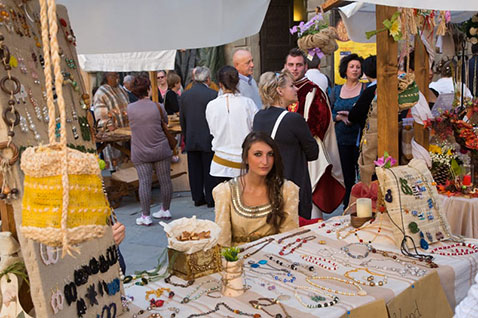
Every year during the medieval week, the town of Cortona organizes traditional medieval markets, where people can buy delicious typical products and taste old recipes of countryside tradition as well as enjoy beautiful local handicraft expositions which recall old trades and flavors.
Click here for details
Archidado Joust in Cortona
06-09/06
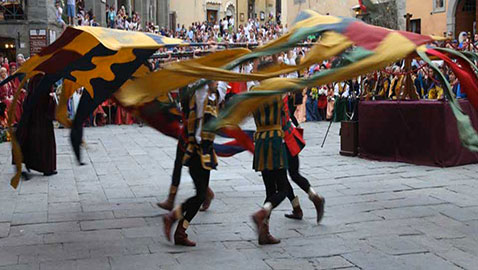
The Archidado Joust, officially created in 1397 to celebrate the wedding of the Lord of Cortona and a noble woman from Siena, is a historical event in which the different quarters of the town compete in a crossbow tournament. Costume parades, typical medieval dinners, flagflyers and fire-eaters performances, falconry and magic shows are organized every year to relive the medieval splendor of Cortona.
Click here for details
Pro-Spino Vintage Car Race in Pieve Santo Stefano
07-09/06
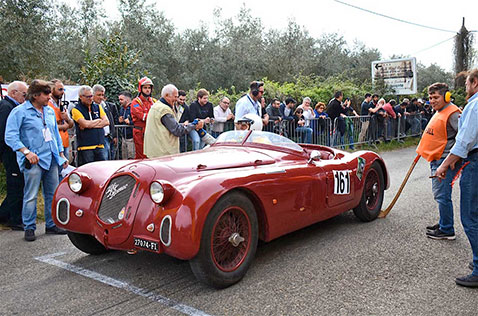
Imagine you live in a small village on a hill, where car races are watched on TV and are expected to be held in circuits. Suppose this village is the starting point of one of the many Italian “state roads” (precisely the 208 road to “La Verna”) climbing for 12km along a mountain gap to reach an altitude of 1000m. Consider the perfect combination of bends and straight stretches of this road, which has earned it the definition of “natural racetrack hanging onto the mountain”. Add to this scenario a well-known resident of Pieve who is driven by his passion for motorsports and decides to organize a little “homemade grand-prix” on the SP 208 – together with Automobil Club of Arezzo and Scuderia Chimera… and here is the very essence of "Lo Spino" hill-climb race.
Click here for details
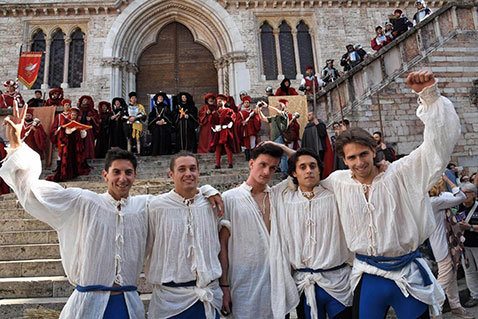
The historical procession, the culminating moment of Perugia 1416, celebrates the entrance of Braccio Fortebracci from Montone to Perugia. Event that, six hundred years ago, symbolically marked the transition from the Middle Ages to the Renaissance and the start of the potentate - de facto lordship, or "cripto-signoria" of Braccio over the city.
To remember it, but above all to relive it, means to recover the ancient unity between cities, villages and countryside, to revive one's roots, to feel part of a history that reaches us today
Click here for more details
Joust of Quintana in Foligno
14/06
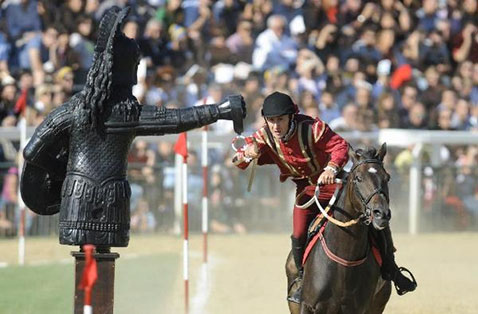
La Quintana is the most difficult and exciting ring in Italy and takes place twice a year in Foligno.
During the competition, each contender must cross the treacherous 8-shaped track of the "Campo de li Giochi" in Foligno. At the intersection of the two diagonals of the path is the wooden statue of the God Mars with his right arm outstretched. From its fist, a hook holds a ring which the riders on galloping horses must center with their lance. The Giostra is divided into three rounds, with rings that gradually grow smaller. The winner of the Palio is the rider who finishes the course with the least number of penalties and in the shortest possible time.
Click here for more details
Market of Gaite in Bevagna
20-30/06
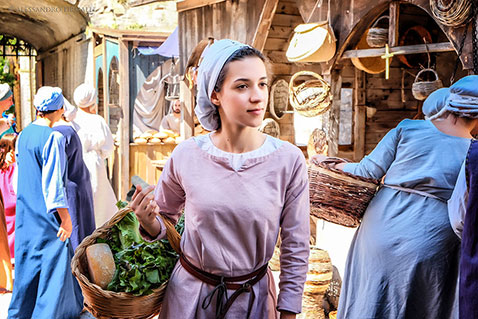
The Market of the Gaite is a historical commemoration of folk traditions, a festival that sees 4 Gaite of the city to organize their own markets independently and competed to win the prize consecrates the historical interpretation of this fact more faithful to the Middle Ages.
The city comes alive during the days of the festival of shops noise, taverns everywhere.
Four ancient medieval crafts reopen their doors and take over the activities:
The paper mill: production site of "cotton wool paper", made with pulp derived from rags. The work stages that allow to create the sheet of paper are: the selection, the maceration and the reduction in the slurry of tissues, drying, sizing, and the final calendering.
The candle factory: the old workshop where they make candles of pure beeswax: the wax is melted in a copper cop before being cast on hemp wicks. The candle slowly takes shape and through a clever twist you get the "duplero", singular artifact characterized by double flame and twice the life.
The Silk Factory: provides insight into the silk production cycle, from breeding silkworms on mulberry leaves for reeling cocoons, until the twisting of the wire through the great machine of the "twister". The Minting money factory: where the process of creating two of the coins in circulation in Bevagna in the fourteenth century is rebuild: the money "Cortona" and money "Perosino". The ancient art of "coin money" is revived through various phases: copper and silver smelting, punching and whitening to give the metal the purchasing power of the medieval coin.
Flower Carpets in Spello
22-23/06
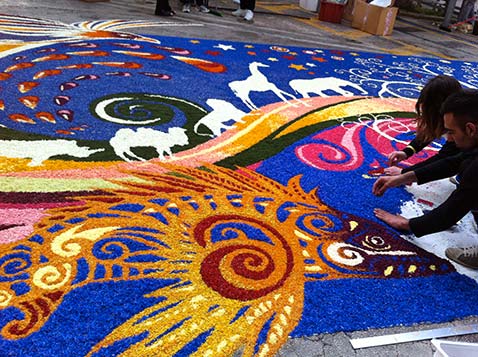
Spello's wonderful Infiorate Flower Arrangements are an explosion of colours. Each year in Spello, about 1500 metres of floral carpets and pictures inspired by religious themes are realised throughout the streets and squares to mark Corpus Christi. The Infiorate Flower Arrangements are gorgeous floral creations made by real artists who design and prepare them for months using plant elements only. It's a task that requires much patience, and many people. The flower arrangers work on the roads throughout the night, designing and arranging millions of petals in order to create these magical and meaningful masterpieces. Everything is ready at 9:00 a.m., and it's a unique spectacle to behold: a beautiful procession atop a carpet of flowers.
Click here for more details
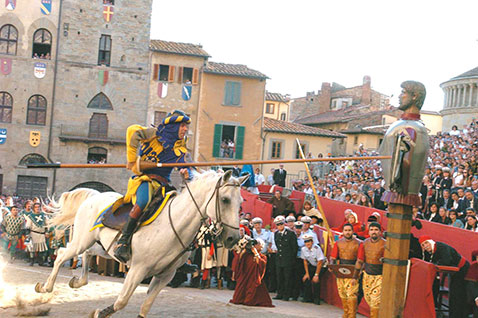
The Giostra del Saracino or simply “Il Saracino” as it is known among the aretini (inhabitants of Arezzo), is the event that represents at its most the traditions and the history of Arezzo. The Saracen Joust is a historical event with very antique origins: 13th Century documents show how Aretins were fond of jousts and tournaments and the joust was certainly carried out in 1400. The most ancient document, however, is a Priors’ resolution stating that the Joust against the Saracen should take place on Sunday and that the prize would be a piece of purple satin.
Click here for more details
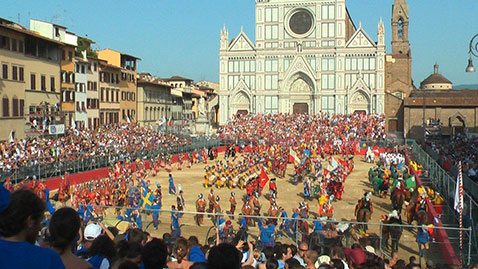
The origins of this game are believed to date right back to Roman times, when the Roman Army adapted a Greek ball game, and used it as a type of training for the warriors. You can tell it was a violent game right from the offset, as the name given to it literally translated as ‘to rip off’…! Two teams would play on sandy ground using a ball made up of leather and rags. There really was only one objective; get the ball into the opponent’s field… by any means possible! Needless to say, the result was often brutal and bloody.
Click here for more details